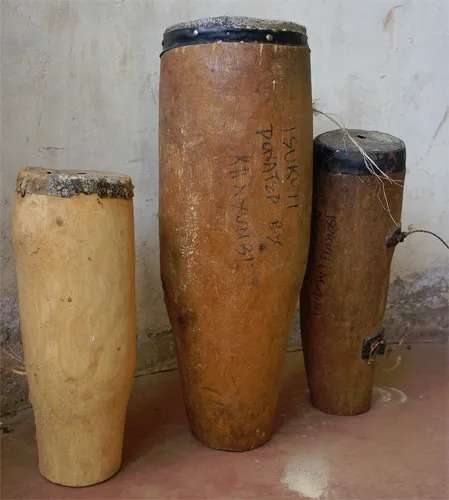Description
Isukuti is a traditional drumming style and dance practiced by the Luhya people of Western Kenya. The word "Isukuti" originates from the Luhya language and refers to both the drumming itself and the cultural celebration in which it is performed. The Isukuti drum is typically large and barrel-shaped, carved from a single piece of wood. It often has a skin head on both ends, usually made from animal hide such as goat skin, which is tightly stretched and secured with ropes or cords. The Isukuti drum produces deep, resonant tones with a rich timbre. The sound can vary depending on the size and type of drum, as well as the technique used by the drummer. Isukuti drumming is an integral part of Luhya culture and is often performed at social gatherings, ceremonies, and festivals. It serves various purposes, including entertainment, communication, storytelling, and spiritual expression. Isukuti rhythms are characterized by repetitive patterns and syncopated beats, creating a lively and dynamic sound that is conducive to dancing. The drummers often play in ensemble, with each drummer contributing to the overall rhythm and groove of the music. Isukuti drumming is closely associated with dance, and the rhythms of the drums are accompanied by synchronized movements and footwork. The dance movements are often energetic and expressive, reflecting the joy and vitality of Luhya culture.




